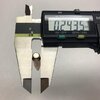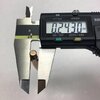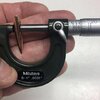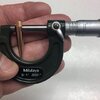you’ve just discovered why we anneal brass.
imho it’s easier to make less neck tension more consistent. In my 260ai I only sized half the neck (using a bushing die not screwed in all the way) and only put about 1.5 thou of tension on. Worked great but after a couple firings I had to anneal or I got same symptoms as you.
on my 6.5x47 that strategy didn’t work and I really needed 2-3 thou of tension.
AMP annealer is expensive but if you’ve got the $ it beats the crap out of messing with torches and paint
I appreciate the input, but I think there is a more substantial problem at work here that I need to work out. This particular issue wasn't caused by not annealing nor will it be cured with annealing. The brass was freshly annealed when new, and the once fired brass was showing substantially the same neck OD as the new brass after both were sized.
I may have a problem with my throat design and this particular bullet ogive location. It looks ok upon inspection, but seating feels strange (both unfired and once fired). I can feel resistance as the bullet starts seating in the case neck, but then when i get closer to my seating depth, the resistance fairly quickly decreases and seems to drop off.
I'm going to double check that the full diameter portion of the bullet ends where I think it does, if so I should be fine and the problem must be in how my dies are sizing the neck. I might either get a different collet, or maybe I'll pick up a Hornady full length sizing die off of GAP's website just to try it (currently have the RCBS matchmaster set).
I'm not new to reloading, long range shooting or even collet dies and annealing, there's just something weird going on here I haven't quite nailed down.
Tried the same loads today at 300 and then some at 750 and 1,000... Not great I'm going to sort the dies out and start over. I might have gotten a bit spoiled shooting .308, Creedmoor and other well established cartridges.... less thoroughly wrung out wildcats might take a little more work, lol.
I did use the range AMP annealer to anneal a few hundred 6.5 CM and all my GT cases while I was there, so something got accomplished anyway.





